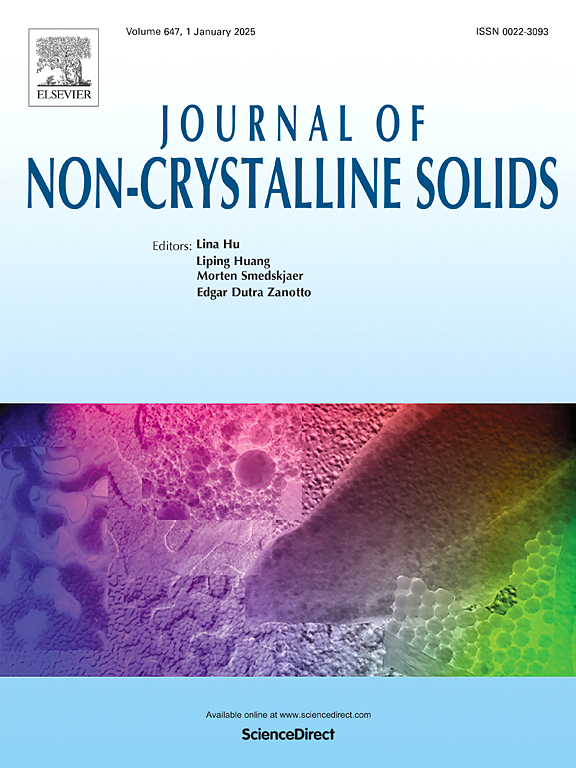中子辐照和退火过程中SiO2玻璃点缺陷的形成和湮灭
IF 3.2
3区 材料科学
Q1 MATERIALS SCIENCE, CERAMICS
引用次数: 0
摘要
本文采用系统的分子动力学(MD)模拟研究了SiO2玻璃在中子辐照和退火过程中点缺陷的演化。结果表明:点缺陷非桥氧(NBO)和E′型中心的数量在0.2 ps内显著增加,在0.2 ps后逐渐减少,点缺陷缺氧中心(ODC)、过氧键(POL)和过氧自由基(POR)的数量在0.2 ps内呈逐渐增加的趋势,这些点缺陷的数量与初敲原子的动能成正比。在退火过程中,我们考虑了SiO2玻璃在1000 K、1500 K和2000 K的中子辐照情况。发现点缺陷在退火过程中迅速消失,定性结果与文献结果一致,其中辐照石英玻璃中的E′、ODC和NBOs在超过550℃退火时发生脱色。最后,我们考虑了SiO2的态的振动密度,发现低频(0.1 ~ 0.5 THz)态的振动密度大大增强。本文章由计算机程序翻译,如有差异,请以英文原文为准。
Formation and annihilation of point defects in SiO2 glass during neutron irradiation and annealing
We perform systematic molecular dynamics (MD) simulations to explore the evolution of point defects in SiO2 glass during neutron irradiation and annealing. Our results suggest that the numbers of point-defects nonbridging oxygens (NBO) and E′-type center increase significantly within 0.2 ps, and then decrease gradually over 0.2 ps. The numbers of point-defects oxygen deficient centers (ODC), peroxy linkages (POL) and peroxy radicals (POR) present gradual increase tendency within 0.2 ps. The number of these point defects is in direct proportion to the kinetic energies of the primary knock-on atoms. During annealing, we consider the situations that SiO2 glass is irradiated by neutron at 1000 K, 1500 K and 2000 K. It is found that point defects disappear quickly during annealing and it qualitatively agrees with the literature results, where E’, ODC and NBOs in irradiated silica glasses are bleached when annealing at temperatures exceeding 550 °C. Finally, we consider the vibrational density of states of SiO2, and find that the low-frequency (0.1∼0.5 THz) vibrational density of states is greatly enhanced.
求助全文
通过发布文献求助,成功后即可免费获取论文全文。
去求助
来源期刊

Journal of Non-crystalline Solids
工程技术-材料科学:硅酸盐
CiteScore
6.50
自引率
11.40%
发文量
576
审稿时长
35 days
期刊介绍:
The Journal of Non-Crystalline Solids publishes review articles, research papers, and Letters to the Editor on amorphous and glassy materials, including inorganic, organic, polymeric, hybrid and metallic systems. Papers on partially glassy materials, such as glass-ceramics and glass-matrix composites, and papers involving the liquid state are also included in so far as the properties of the liquid are relevant for the formation of the solid.
In all cases the papers must demonstrate both novelty and importance to the field, by way of significant advances in understanding or application of non-crystalline solids; in the case of Letters, a compelling case must also be made for expedited handling.
 求助内容:
求助内容: 应助结果提醒方式:
应助结果提醒方式:


